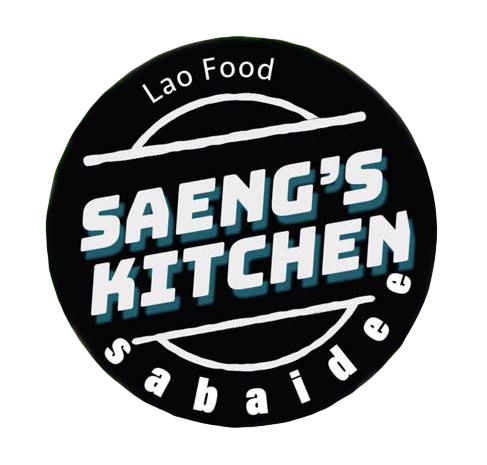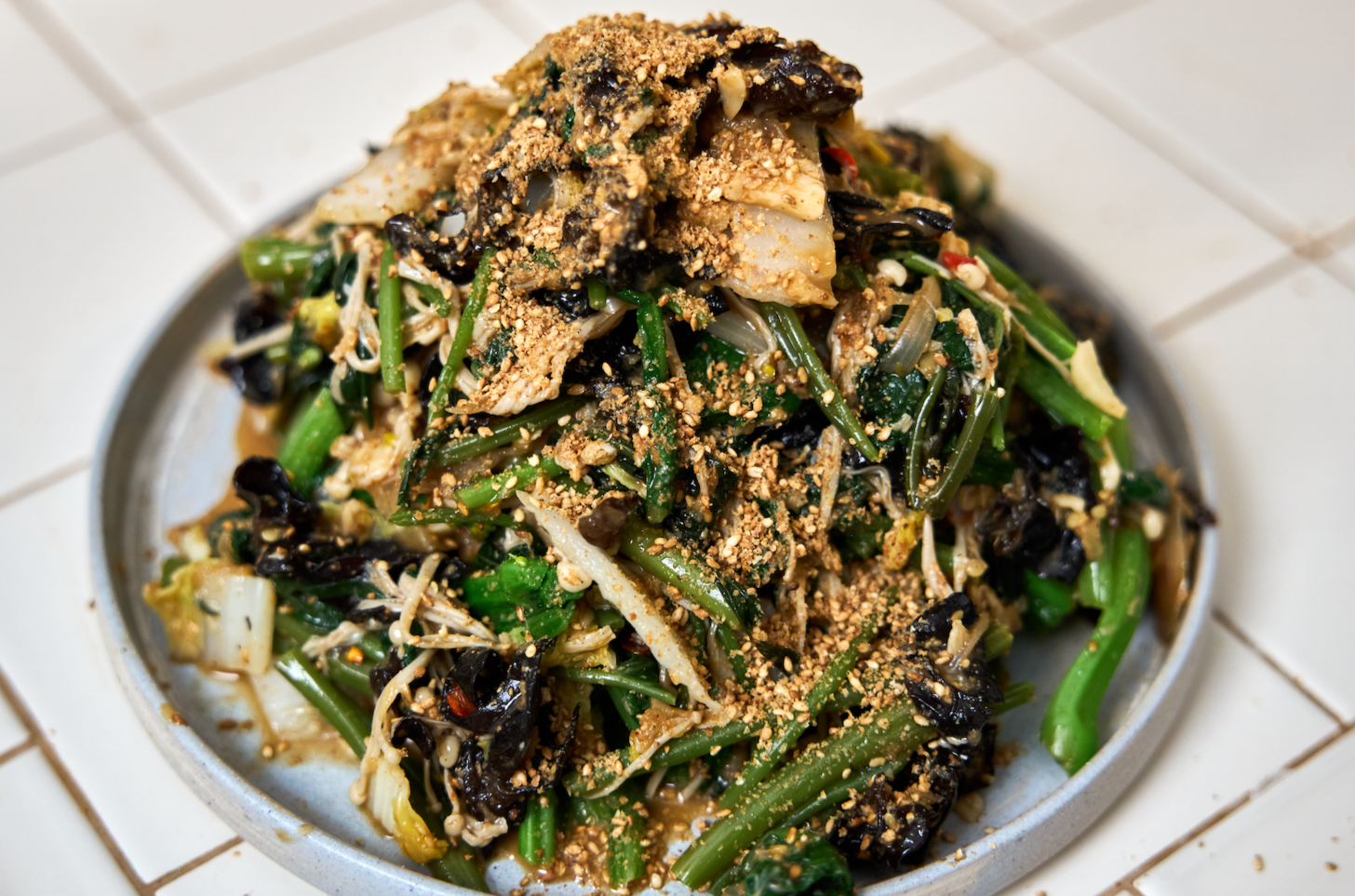Lao Rice Noodle Rolls (Steamed Rice Rolls with Pork Filling)
What are Lao Rice Rolls?
Rice rolls are a popular street food in Laos, often resembling Vietnamese bánh cuốn, with a mushroom and pork filling topped with a sweetened fish sauce. For this version, I wanted to take a different approach by incorporating Mien fermented bean paste—a key ingredient in Lao cooking—and infusing the filling with the bold, savory flavors of Lao khao soi. Think of it as a dry version of Lao khao soi, wrapped in a single large rice noodle sheet and sliced into bite-sized rolls.
What is Khao Soi Style?
Don’t confuse this with the Thai version of khao soi—the Lao version is quite different. Lao khao soi features thick rice noodles in a savory pork broth, topped with a tomato-based minced pork sauce similar to Bolognese. This comforting noodle dish is especially popular in Luang Prabang.
What is Mien fermented soy bean paste?
Mien fermented soybean paste is a staple ingredient in Lao cuisine, commonly used in dipping sauces and as a key component in the pork topping for Lao khao soi. It's often formed into dehydrated patties and sold at morning markets. What sets Mien fermented paste apart from East Asian varieties is its bold use of chili peppers and spices, giving it a more pungent and fiery flavor profile.
What are the special equipments needed?
The method used to make these rice rolls plays a big role in how thin and tender they turn out. They’re steamed using a sticky rice basket steamer topped with a round bamboo lid. A piece of muslin fabric is stretched tightly over the top and secured with a metal ring to keep it flat. The rice batter is poured onto the hot fabric and gently swirled until it begins to set, forming a delicate sheet ready for steaming.
Ingredients Needed for Lao Rice Rolls
Filling
vegetable oil: added to the batter so it doesn’t stick to the fabric and softens the rolls.
garlic: adds a nice aroma to the filling.
gochugaru (Korean red pepper powder): gives the filling a vibrant red color; sweet paprika can be used to substitue.
tua nao (Mien fermented soybeans) or doenjang: I prefer the brand Thopezay. Helps level up the umami flavors.
yellow onion: adds texture.
roma tomato: adds texture, color, and acid to the ground pork.
ground pork: the fattiness of the pork works well with bringing out the other flavors in the mixture.
MSG: add umami.
fish sauce: complex salt flavors.
Rice Roll Batter
jasmine rice flour: helps make the rolls soft.
tapioca flour: helps make the rolls slightly bouncy and holds the rolls together.
salt: flavor
vegetable oil: helps soften the batter and prevent sticking.
Garnish
Fried shallots: add texture and flavor.
Fresh cilantro: the essential herb to enjoy the rolls with. It can also be eaten as a lettuce wrap with other seasonal herbs.
Jeow Wan Sauce
sugar.
garlic clove.
fresh bird’s eye chilies: prefer the red ones as those are spicy
peanuts: can be optional
lime: helps cut through the fish sauce
fish sauce.












Sabaidee, I’m Saeng!
I’m a personal chef who specializes in Lao food. Here at Saeng’s Kitchen, you’ll find all your favorite traditional Lao foods and also some new twists to Lao style dishes.